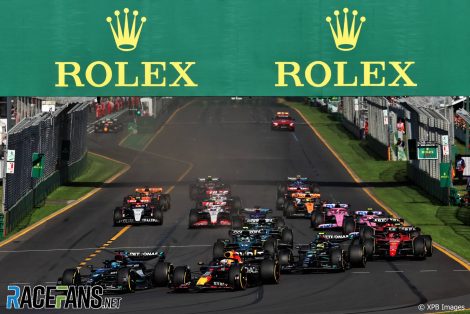Eight years ago, a precocious 17-year-old not even legally permitted to drive a road car at the speed limit made his Formula 1 debut at the Albert Park circuit in Melbourne.
That same driver went on to become the youngest-ever grand prix winner 14 months later. These were the first record-breaking chapter in what is already one of the sport’s most successful careers.
As Max Verstappen returned to Australia to 2023, he did so for only the first time as the championship leader. The mission was to earn the unique dish-shaped Sir Jack Brabham trophy for the first time in his career – one of only four available this year he has not previously acquired for his cabinet.
Heading into the race, the world champion could hardly have asked for a stronger chance of success. Red Bull’s early season superiority is unquestionable, punctuated by him securing the team’s third pole from three attempts. Helpfully, the one driver wielding the same potent machine, Sergio Perez, was starting not from the grid but the pit lane – a legacy of a subpar Saturday that had ended the turn three gravel.

Instead, two black shadows haunted Verstappen at the front of the grid. George Russell and Lewis Hamilton had turned the narrative of Mercedes’ performance woes around by securing their best starting positions of the season. However, both Fernando Alonso and Carlos Sainz Jnr behind were quietly confident that while their cars had been bested by Mercedes on Saturday, both Aston Martin and Ferrari would be stronger on Sunday.
As the top seven starters lined up in their newly-expanded grid slots on medium tyres, a potential six-way fight over the honour to finish behind Verstappen appeared to be in the making. However, that all changed the moment the lights went out.
Verstappen’s start was good. Russell’s was great. Verstappen moved to squeeze the Mercedes to the inside on the run to the first corner, forcing Russell to take to the pit exit. But an unfazed Russell held the inside to sweep into the lead. Verstappen’s exit was compromised by his line, leaving him vulnerable to Hamilton behind. Although not as far alongside Verstappen as his team mate had been, Hamilton held both his nerve and the inside line into turn three to muscle Verstappen down to third, prompting objections on the radio from the pole-winner.
Advert | Become a RaceFans supporter and
Two car lengths back, Charles Leclerc refused to be beaten by both Aston Martins…
Click Here to Read the Full Original Article at RaceFans…
